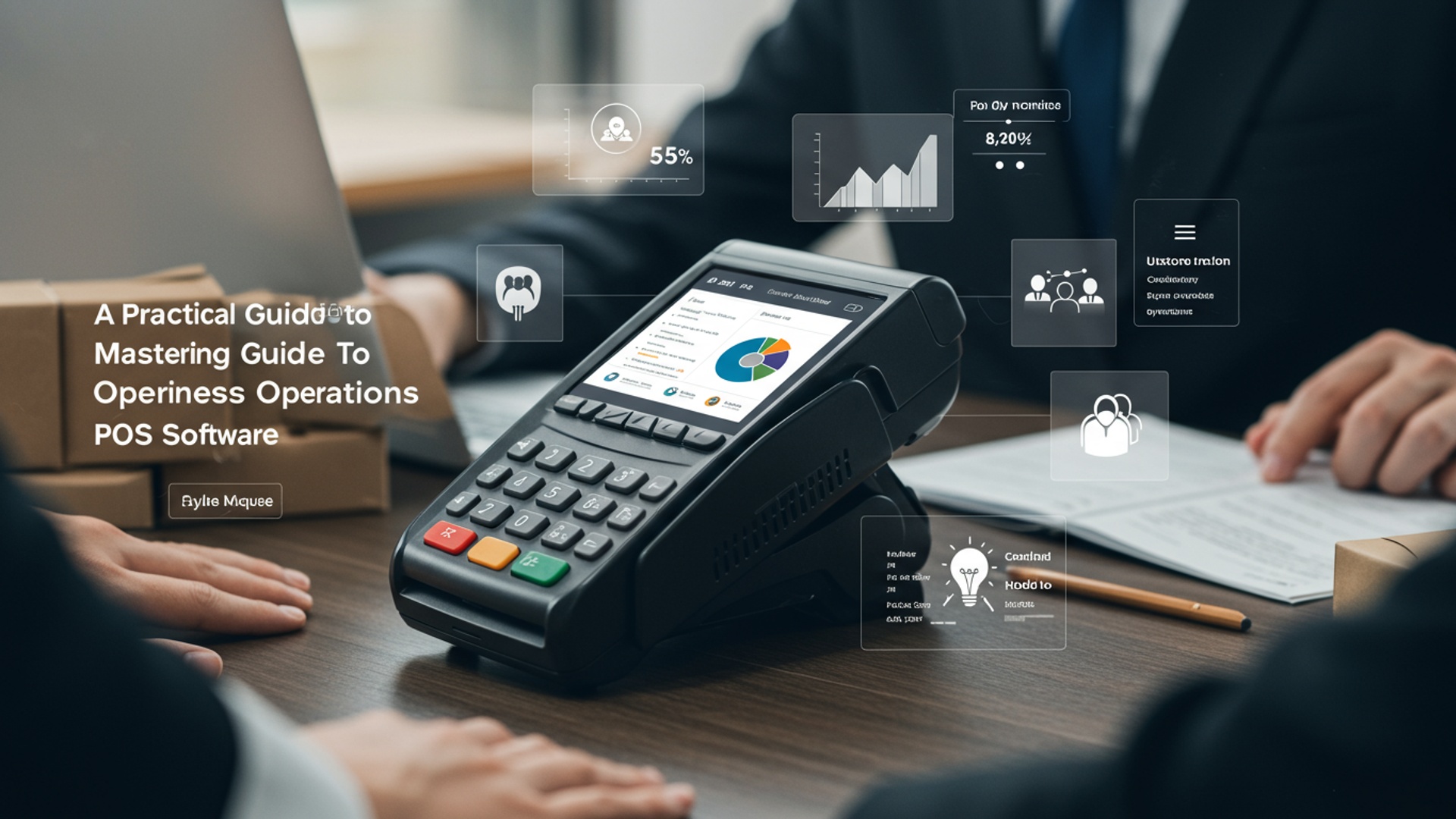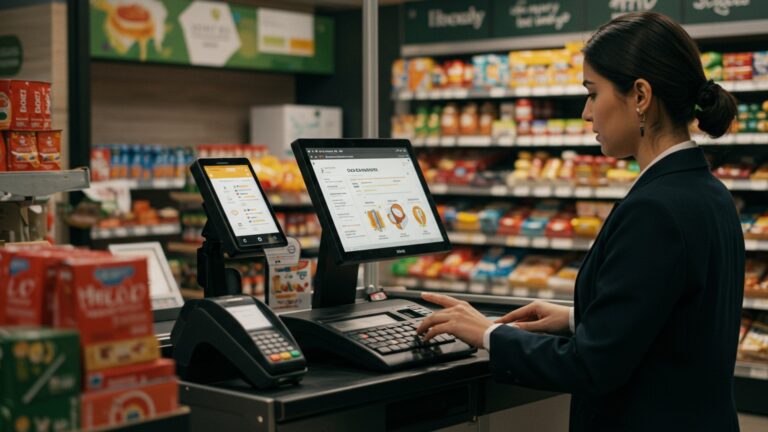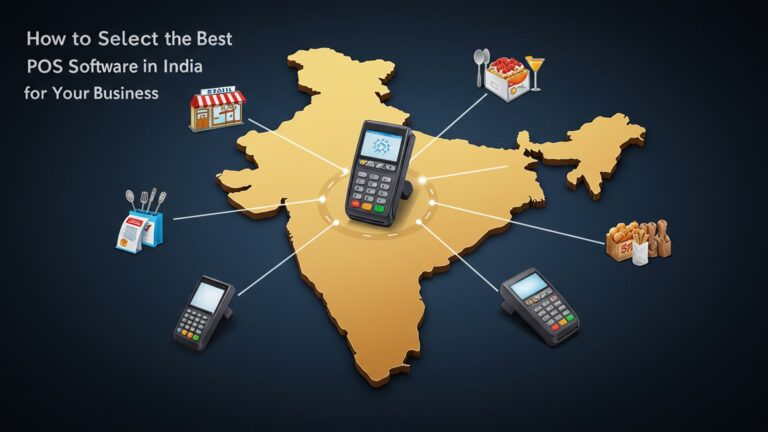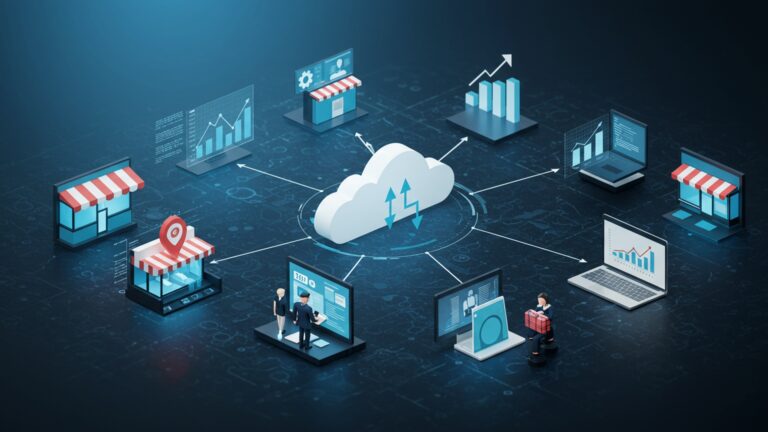A Practical Guide to Mastering Business Operations with POS Software
- pos software
- pos software

The Foundation: What is POS Software and Why It Matters?
In today’s fast-paced business environment, efficiency and accuracy are paramount. At the heart of many successful operations lies a powerful tool: pos software. Often perceived merely as a glorified cash register, modern pos software is, in reality, a comprehensive operational hub that streamlines transactions, manages inventory, tracks customer data. provides invaluable insights into your business performance.
At its core, POS stands for “Point of Sale.” This refers to the physical or virtual location where a customer completes a transaction. Historically, this involved a simple cash register. Today, pos software transforms this process into a sophisticated digital interaction. When a customer makes a purchase, the pos software records the sale, updates inventory levels in real-time, processes payments. can even link the purchase to a customer’s loyalty profile. It’s the central nervous system for retail, hospitality. many service-based businesses.
- pos software
- pos software
Key Features and Capabilities of Modern POS Software
The evolution of pos software has led to a suite of features that extend far beyond basic transaction processing. To truly master your operations, it’s crucial to interpret these capabilities and how they can be leveraged.
- Advanced Transaction Processing
- Comprehensive Inventory Management
- Customer Relationship Management (CRM)
- Employee Management
- Robust Reporting and Analytics
- Seamless Integrations
- Mobility and Cloud Accessibility
Modern systems handle sales, returns, exchanges, discounts, gift cards. loyalty points with ease. They support various payment methods, including EMV chip cards, NFC (tap-to-pay). mobile wallets, ensuring secure and flexible transactions.
This is where pos software truly shines for many businesses. It allows for real-time tracking of stock levels, automates reorder alerts, manages product variations (size, color). can even track inventory across multiple locations. For example, a small boutique can know exactly how many medium blue dresses are left in stock across all its stores, preventing overselling or stockouts.
Build stronger customer relationships by tracking purchase history, preferences. contact details. This enables personalized marketing campaigns, targeted promotions. effective loyalty programs. A restaurant, for instance, can use its pos software to remember a customer’s favorite dish or dietary restrictions, enhancing their dining experience.
Simplify staff scheduling, time clock functionality. performance tracking. Assign roles and permissions to control access to sensitive data and functions. This not only boosts accountability but also helps in evaluating staff efficiency and identifying training needs.
Gain deep insights into your business with customizable reports on sales trends, peak hours, best-selling products, profit margins. employee performance. This data is invaluable for making informed strategic decisions, identifying areas for improvement. optimizing operations.
The power of pos software is amplified when it integrates with other essential business tools, such as e-commerce platforms (Shopify, WooCommerce), accounting software (QuickBooks, Xero). marketing automation systems. This creates a unified ecosystem that eliminates manual data entry and ensures consistency across all platforms.
Many modern solutions offer cloud-based access, allowing you to manage your business from anywhere, anytime, on any device. Mobile POS (mPOS) systems, using tablets or smartphones, enable sales on the go, ideal for pop-up shops, food trucks, or even just processing orders directly from the store floor.
Choosing the Right POS Software for Your Business
Selecting the ideal pos software is a critical decision that can significantly impact your operational efficiency and bottom line. It’s not a one-size-fits-all solution. careful consideration of your specific business needs is essential.
When evaluating options, consider the following:
- Industry-Specific Needs
- Business Size and Scalability
- Budget
- Hardware Compatibility
- Ease of Use
- Customer Support and Training
A restaurant’s needs differ vastly from a retail store or a salon. Does the software offer table management, kitchen display systems (KDS), or appointment scheduling? Does it support barcode scanning, matrix inventory, or commission tracking?
Is the software suitable for a single-location startup, or can it grow with you to accommodate multiple branches and increasing transaction volumes? Scalability often involves licensing models and cloud infrastructure.
grasp the total cost of ownership, including initial setup fees, monthly subscriptions, hardware costs. potential transaction processing fees.
Ensure the software works seamlessly with your existing or planned hardware (printers, barcode scanners, cash drawers, payment terminals). Some providers offer integrated hardware bundles.
An intuitive interface reduces training time and minimizes operational errors. A complex system, no matter how feature-rich, can hinder efficiency.
What kind of support does the vendor offer (24/7, phone, email, chat)? Are there training resources available? Reliable support is crucial when issues arise.
A key decision point often revolves around the deployment model:
| Feature | Cloud-Based POS Software | On-Premise POS Software |
|---|---|---|
| Definition | Software hosted on the vendor’s servers, accessed via the internet. | Software installed directly on your local computers/servers. |
| Accessibility | Anywhere, anytime, on any internet-connected device. | Typically limited to the physical location where it’s installed. |
| Cost Structure | Subscription-based (monthly/annually), lower upfront costs. | Higher upfront costs for software licenses and hardware, ongoing maintenance. |
| Updates & Maintenance | Automatic updates, vendor handles maintenance. | Manual updates, IT team handles maintenance and security. |
| Data Security | Vendor responsible for security, often with robust measures. | Your responsibility to manage and secure data locally. |
| Internet Dependency | Requires a stable internet connection (though some offer offline mode). | Less dependent on internet for core functionality. |
| Scalability | Easier to scale up or down based on business needs. | Scaling often requires significant hardware/software upgrades. |
For most modern businesses, especially those seeking flexibility, remote management. lower initial investment, cloud-based pos software is often the preferred choice. But, businesses with specific security or regulatory compliance needs might still opt for on-premise solutions.
Implementing and Optimizing Your POS Software
Once you’ve chosen your pos software, successful implementation and ongoing optimization are crucial for realizing its full potential. This isn’t just about plugging in devices; it’s a strategic process.
A Step-by-Step Implementation Guide:
- Hardware Setup
- Software Installation & Configuration
- Data Migration
- Inventory Input
- Staff Training
- Testing
- Go Live & Monitor
Install and connect all necessary hardware components (POS terminals, receipt printers, barcode scanners, cash drawers, payment terminals). Follow the manufacturer’s instructions carefully.
Install the pos software (if on-premise) or set up your cloud account. Configure business settings: store details, tax rates, payment methods, employee roles. permissions.
This is a critical step. Import your existing product catalog (SKUs, prices, descriptions, images), customer database. vendor details. Ensure data accuracy to avoid future headaches. Many pos software providers offer tools or services to assist with this.
Accurately enter initial stock levels for all products. This forms the baseline for your real-time inventory tracking.
This cannot be overstated. Comprehensive training for all employees who will use the pos software is essential. Cover everything from basic transaction processing to handling returns, applying discounts. using reporting features. Role-play scenarios can be highly effective.
Before going live, conduct thorough tests. Run mock transactions, process returns, open and close shifts. generate reports to ensure everything is working as expected.
Launch your new system. Be prepared for minor hiccups and have support channels readily available. Actively monitor performance and gather feedback from your team.
Optimizing for Peak Performance:
- pos software
- pos software
- Regular Data Review
- Inventory Audits
- Stay Updated
- Refine Workflows
Routinely review your sales, inventory. customer data. Identify trends, popular products, slow-moving items. areas where staff might need additional training.
Periodically conduct physical inventory counts and reconcile them with your pos software records. This ensures accuracy and helps identify shrinkage or data entry errors.
Always keep your pos software updated to the latest version. Updates often include new features, security enhancements. bug fixes that improve performance and protect your business.
Based on staff feedback and data analysis, continuously refine your operational workflows. Can certain steps be automated? Is there a faster way to process a common transaction? Your pos software should adapt to your evolving business.
Advanced Strategies for Mastering Operations with POS Software
Beyond the basics, leveraging your pos software strategically can unlock significant competitive advantages and drive growth. Think of it as a data powerhouse waiting to be fully utilized.
- Data-Driven Decision Making
- Merchandising
- Staffing
- Marketing
- Personalizing Customer Experiences
- Streamlining Inventory Workflows
- Enhancing Employee Productivity and Accountability
- Integrating with Other Business Systems for an Omnichannel Experience
- Embracing Future Trends
- AI and Machine Learning
- Self-Checkout Options
- Contactless Payments
- Voice Commerce Integration
Use the rich data from your pos software to inform every aspect of your business.
Identify top-selling products to optimize shelf space or menu placement. Discontinue underperforming items to free up capital.
Schedule staff more effectively by analyzing peak sales hours, reducing labor costs during slow periods and ensuring adequate coverage during busy times.
Segment your customer base based on purchase history and preferences, then target them with highly personalized promotions. For example, a customer who frequently buys coffee beans could receive an offer for a new brewing accessory.
Integrate your pos software with CRM functionalities to create memorable customer interactions. When a loyal customer walks in, your staff can access their purchase history, previous preferences, or even birthday, enabling a personalized greeting or recommendation. This fosters loyalty and enhances customer satisfaction. Consider how a high-end salon uses its pos software to track a client’s preferred stylist, color formula. even their beverage choice.
Move beyond simple tracking. Implement advanced inventory features like vendor management, purchase order generation. automated reorder points. This proactive approach minimizes stockouts (lost sales) and reduces overstocking (tied-up capital). Some advanced systems can even predict demand based on historical sales data, optimizing your ordering process further.
Utilize the employee management features to their fullest. Track individual sales performance, identify top performers. offer targeted incentives. Use permission settings to empower staff with necessary access while maintaining control. For instance, a retail manager might grant floor staff access to check stock levels in other stores via the pos software. restrict access to sensitive financial reports.
True mastery comes from integrating your pos software into a cohesive ecosystem. Connect it with your e-commerce platform to ensure inventory synchronization across online and offline channels. Integrate with accounting software for automated bookkeeping, saving countless hours. Link to marketing automation tools to trigger post-purchase emails or abandoned cart reminders. This creates a seamless customer journey, whether they shop in-store or online. provides a holistic view of your business operations.
Stay ahead by exploring emerging trends in pos software.
For predictive analytics, personalized recommendations. even fraud detection.
Empower customers with convenience, especially in high-volume environments.
Continued adoption of mobile wallets and tap-to-pay for speed and hygiene.
As smart assistants become more prevalent, ordering via voice might become a reality for some businesses.
Conclusion
Mastering business operations with POS software transcends mere transaction processing; it’s about harnessing a powerful strategic tool. As we’ve explored, the true value lies in leveraging its capabilities—from streamlined inventory and sales tracking to insightful customer analytics. My personal tip? Don’t just implement a system, immerse yourself in its data. I’ve witnessed firsthand how a small cafe, by diligently analyzing their POS reports on peak hours and popular items, significantly optimized staffing and reduced waste, far beyond what they initially thought possible. Today’s landscape, with trends like mobile POS for seamless pop-up events and integrated online ordering systems, demands a proactive approach. Embrace the continuous evolution of features, like AI-driven inventory suggestions, to make informed decisions that propel your business forward. Your POS isn’t just a cash register; it’s the nerve center of your enterprise, offering a roadmap to efficiency, enhanced customer experience. sustainable growth. Dive in, experiment. watch your operations transform.
More Articles
The Ultimate Guide to Understanding Essential POS Software Features
Learn How Smart POS Billing Software Boosts Business Efficiency
Your Complete Guide to Integrated Billing and POS Software
Learn How Mobile POS Software Boosts Sales and Customer Experience
Uncover the Best POS Software in India for Small Businesses
FAQs






